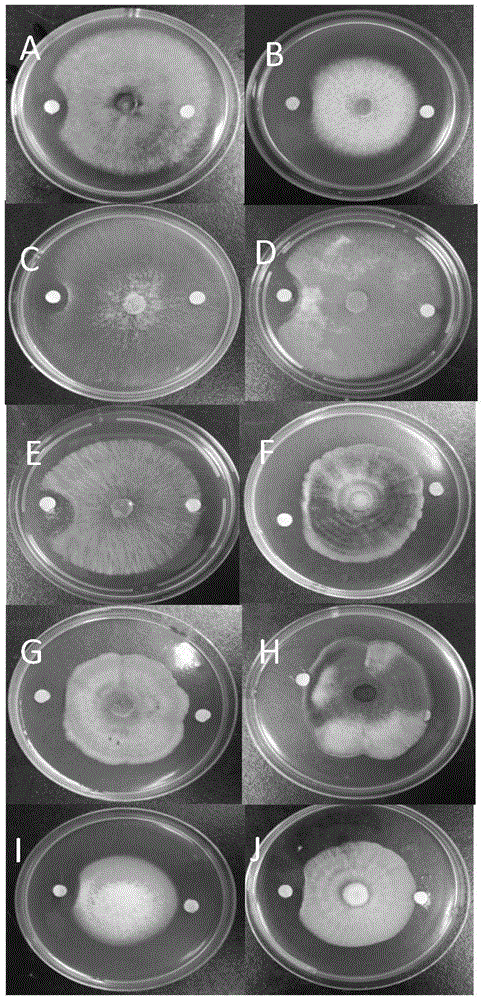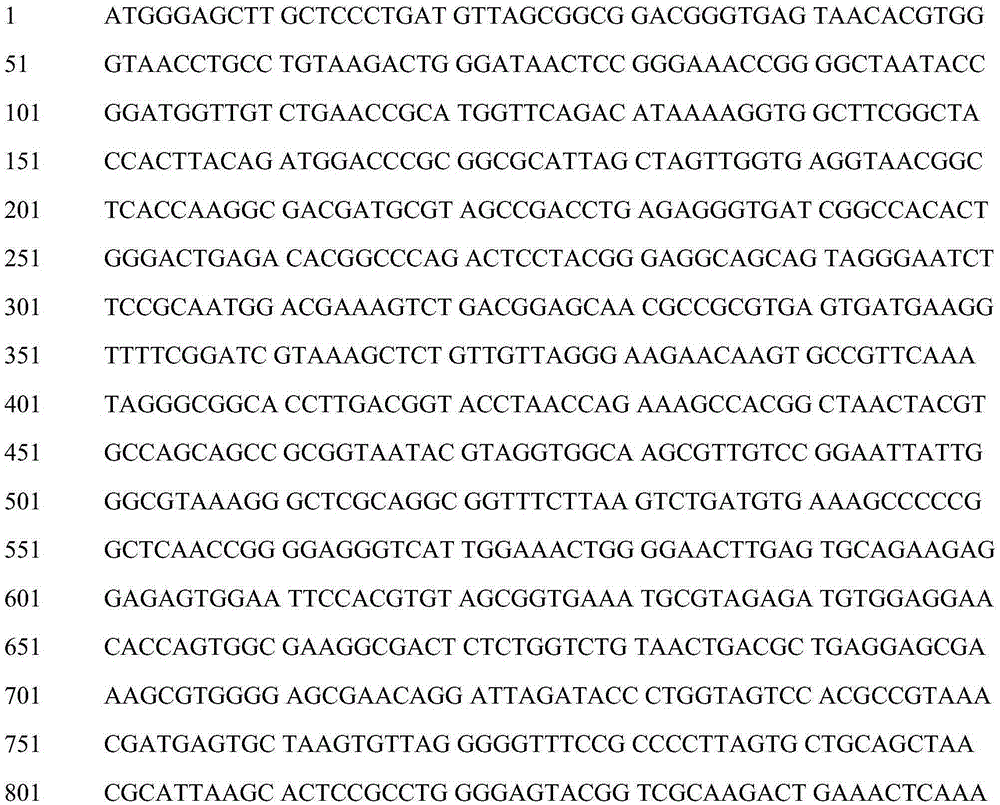Antarctic-derived Bacillus sp.N311 and application of Bacillus sp.N311 for preventing and treating phytopathogenic fungi
A bacillus and phytopathogenic technology, applied in applications, plant growth regulators, botanical equipment and methods, etc., can solve problems such as ecological environment and human health hazards, plant pathogenic bacteria resistance, etc., and achieve a broad antifungal spectrum, Good biological control effect and simple preparation process
- Summary
- Abstract
- Description
- Claims
- Application Information
AI Technical Summary
Problems solved by technology
Method used
Image
Examples
Embodiment 1
[0025] Example 1: Isolation and screening of Bacillus sp. N311
[0026] The present invention relates to bacillus (Bacillus sp.) N311 obtained by screening from the seawater samples collected by the applicant during the 31st Antarctic scientific expedition in China. The bacterium grows on LB medium, and after 24 hours of culture at 28°C, the bacterium is pale yellow, the surface of the colony is rough and dry, and the edges are irregular, see figure 1 .
Embodiment 2
[0027] Embodiment 2: Bacillus sp. (Bacillus sp.) N311 strain identification
[0028] The 16S rDNA universal primers 27F and 1492R (27F: AGAGTTTGATCCTGGCTCAT; 1492R: ACGGCTACCTTGTTACGACTT) were used to amplify the Antarctic strain N31116SrDNA sequence. The total DNA of N311 was used as the PCR amplification template, and the PCR reaction was carried out on a PCR amplification instrument. The reaction conditions were: denaturation at 94°C for 1 min; annealing at 55°C for 1 min; extension at 72°C for 1.5 min, 30 cycles. After the amplified sequence was sequenced by a sequencing company, the 16S rDNA sequence of the strain was obtained. The sequence was compared with the nucleic acid data in GenBank of the National Center for Biotechnology Information (http: / / ncbi.nlm.nih.gov / blast). The results showed that the 16S rDNA sequence of N311 had a sequence similarity of 99% with Bacillus methylotrophicus (HQ662596.1), Bacillus amyloliquefaciens (JF460737.1), and Bacillus amyloliquefa...
Embodiment 3
[0029] Embodiment 3: the mensuration of phytopathogenic fungi antimicrobial spectrum
[0030] The inhibitory activity of Bacillus sp. N311 against 10 plant pathogenic fungi was determined by disc method. Use a sterile puncher to make the test pathogenic fungus into a bacterial block, pick a bacterial block with a toothpick and inoculate it in the center of the potato solid medium plate, and cultivate it under the condition of 28°C. After the mycelium of the pathogenic fungus to be tested spreads and grows, a sterilized double-layer filter paper sheet (diameter 6 mm) is placed around the bacterial block, and the filter paper sheet is about 1 cm away from the edge of the mycelium. Add 50 μL of sterile fermentation supernatant to each filter paper sheet, and continue to cultivate for 24 hours. By comparing with the control group, observe whether the growth of mycelium will be inhibited. If the mycelium of the tested pathogenic fungus is inhibited, the bacteria The filaments will...
PUM
 Login to View More
Login to View More Abstract
Description
Claims
Application Information
 Login to View More
Login to View More - R&D
- Intellectual Property
- Life Sciences
- Materials
- Tech Scout
- Unparalleled Data Quality
- Higher Quality Content
- 60% Fewer Hallucinations
Browse by: Latest US Patents, China's latest patents, Technical Efficacy Thesaurus, Application Domain, Technology Topic, Popular Technical Reports.
© 2025 PatSnap. All rights reserved.Legal|Privacy policy|Modern Slavery Act Transparency Statement|Sitemap|About US| Contact US: help@patsnap.com



